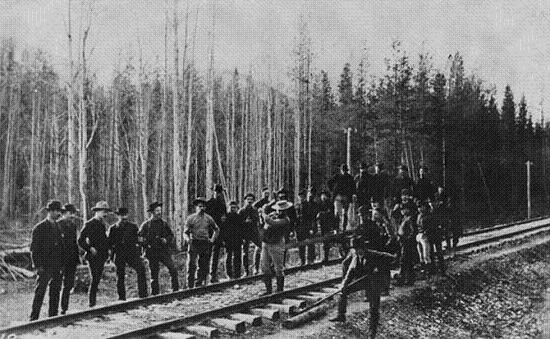In this post
http://www.pacificng.com/forum/viewtopi ... 1013#p3653 over at PacificNG.org Andrew drew my attention to this collection of albums
http://www.kag.bc.ca/exhibitions/allabo ... lbum1.html
and reading in albums led to another unexpected connection to the V&T.
CPRw Roster
#1 Yale 2-6-0 V&T Storey - Union Iron Works SF
#2 Emory 0-4-0T (SF sea wall) (Vulcan SF? Union?)
#3 New Westminster 2-6-0 V&T Humboldt- Baldwin
#4 Savona 2-6-0 V&T Carson - Baldwin
#5 Lytton 2-6-0 V&T Nevada - Baldwin
#6 Nicola 4-4-0 New - Baldwin
#7 Kamloops 4-4-0 New - Baldwin
#8 Shuswap 4-4-0 New - Baldwin
#9 Columbia 4-4-0 New - Baldwin
Four of the C.P.R.'s first five locomotives came from the V&T in 1881-83. All were sold on in 1887 and one remained in service until 1926.
Whether they still had V&T's original paint job or not I can't guess.
Further reading in the albums has led to this
Regulation Station Building
http://www.kag.bc.ca/exhibitions/allaboard/74924.html
Water Tank
http://www.kag.bc.ca/exhibitions/allaboard/74918.html
The first says that Station buildings were built every 10 miles and the second says that water tanks were built at every station.
Specifically they refer to the section between Yale and Savona's but one can construe this to apply to the entire rail line. Note that Station and Section houses seem to be the same thing possibly.
This would seem, if true, to answer my question about the frequency of water and fuel stations.
(BTW note the ties and lack of ballast in these photos. The picture of the Savona is a 1884 ballast train. Under steam shovels there are pictures of flatcars being loaded.)




